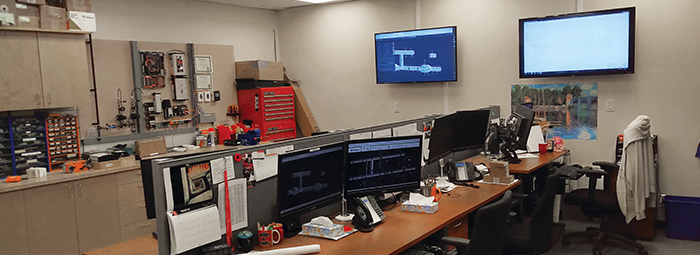
©2020 This excerpt taken from the article of the same name which appeared in ASHRAE Journal, vol. 62, no. 11, November 2020.
About the Authors
Zakia Afroz, Ph.D., is a post doctoral fellow in the Department of Civil and Environmental Engineering, Brodie W. Hobson is a research assistant in the Building Performance Research Centre, H. Burak Gunay, Ph.D., P.Eng., is an assistant professor in the Department of Civil and Environmental Engineering, and William O’Brien, Ph.D., P.Eng., is an associate professor for the Architectural Conservation and Sustainability Engineering program at Carleton University in Ottawa, ON, Canada. Michael Kane, Ph.D., is an assistant professor of Civil and Environmental Engineering at Northeastern University in Boston.
Building operators and facility and energy managers of large buildings make essential operational decisions that affect energy and comfort performance. For example, they decide on the hours of operation of an air-handling unit, default zone temperature settings and outdoor airflow rates, largely based on assumptions about a building’s occupancy and occupant preferences. This article reports the preliminary results of a larger effort to understand the operational decision-making process of building operations staff.
We conducted interviews with building operators, facility, and energy managers from different organizations. Despite the fact that some previous research studies used operator interviews (such as the International Facility Management Association pilot survey on facility performance feedback1), our focus is primarily on understanding operators’ perceptions regarding occupancy and occupant behavior. Unlike previous work, these interviews provide insights on how operations staff handle uncertainties related to building use and occupant expectations, as well as how they use emerging sensing technologies and data analytics solutions that provide insights into occupancy and occupant preferences in their decision-making process.
Questionnaire, Participant Recruitment and Interview Process
The questionnaire presented in this article was developed in discussion with expert researchers participating in the International Energy Agency’s Energy in Buildings and Communities Programme Annex 79.
The interview consisted of 22 questions, incorporating a range of topics related to energy management and occupant comfort.
The interview started with some basic questions, for instance, interviewees’ official title, their relevant experience/credentials; and ended with questions to understand their views about occupant comfort needs and motivations toward their operational decisions. We also sought to identify the nontechnical challenges building operators face in improving energy efficiency in their facilities.
Interview participants were selected based on their expertise and involvement in building operations and facility management. Seventeen interviewees from five different organizations participated.
Building Information and Operational Details
The buildings managed by the interview participants are mostly office, institutional and multifamily residential buildings. The participants are responsible for managing between five and 160 buildings. These buildings are diverse in nature, typically between new and 50 years old. The buildings are either equipped with variable air volume systems or constant air volume systems; the older ones are pneumatically controlled, and the newer ones use direct digital controls. Most of the operators of old buildings noted that they suffer from insulation problems as a result of the deterioration of the building envelope.
Read the Full Article
ASHRAE Members have free access to the full-text PDF of this article as well as the complete ASHRAE Journal archives back to 1997 in the Free Member Access Area.
Non-members can purchase features from the ASHRAE Bookstore. Or, Join ASHRAE!
Return to Featured Article Excerpts
Return to ASHRAE Journal Featured Article Excerpts